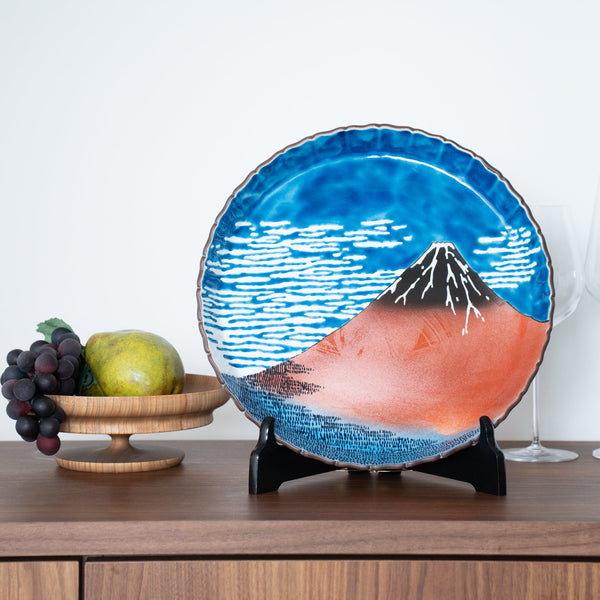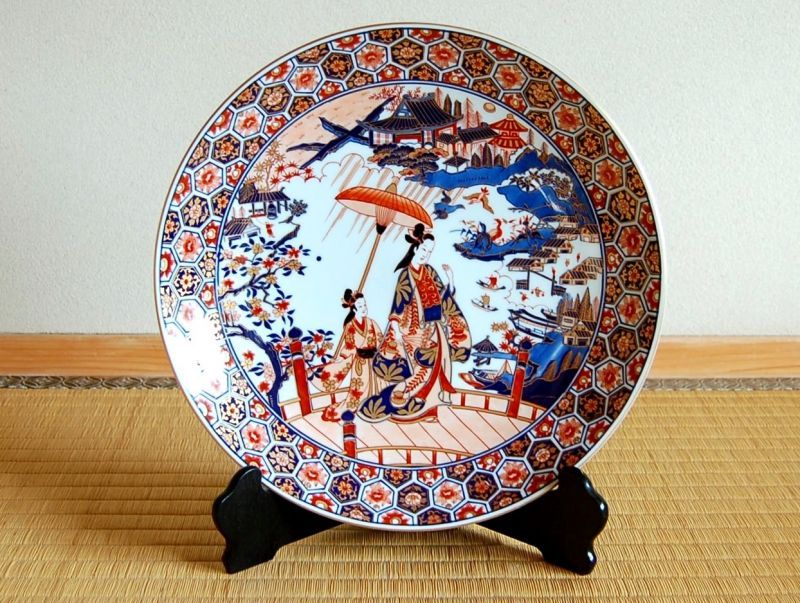Japanese decorative plates are not just functional dinnerware; they embody a rich history and artistry that can elevate any space in your home. In this comprehensive guide, we’ll explore the unique features of these plates, their cultural significance, and practical tips for displaying them in your home.
The Rich History of Japanese Plates
Japanese pottery and porcelain have a storied history, dating back to the Jomon period (14,000 – 300 BCE). Over centuries, artisans have developed distinctive styles and techniques that reflect the beauty of Japanese culture.
Influences on Japanese Plate Design
- Kintsugi: The art of repairing pottery with gold, highlighting imperfections as part of the object’s history.
- Wabi-Sabi: A philosophy that finds beauty in imperfection, influencing the aesthetics of Japanese ceramics.
- Natural Motifs: Nature is a central theme, with common patterns featuring flowers, birds, and landscapes.
Types of Decorative Japanese Plates
Japanese plates come in various styles, each with its unique charm and purpose. Below are some of the most notable types:
1. Imari Plates
Originating from the Arita region, Imari plates are known for their vibrant colors and intricate designs, often featuring red, blue, and gold patterns.
2. Kutani Plates
Kutani ware is characterized by bold colors and detailed hand-painted designs, typically depicting nature or historical scenes.
3. Satsuma Plates
Originally from Kyoto, Satsuma plates exhibit a distinctive crackled glaze and often feature gold embellishments and complex scenes.

4. Arita Plates
Arita ware is renowned for its fine porcelain and delicate artistry, frequently showcasing blue and white floral designs.
Comparison Table of Japanese Plate Types
| Plate Type | Origin | Color Palette | Common Themes |
|---|---|---|---|
| Imari | Arita | Red, Blue, Gold | Abstract, Floral |
| Kutani | Kanazawa | Bold Colors | Nature, Historical Scenes |
| Satsuma | Kyoto | Crackled Texture | Gold Embellishments |
| Arita | Arita | Blue and White | Floral, Landscape |

How to Incorporate Decorative Japanese Plates into Your Home Decor
Decorative Japanese plates can serve as stunning accents in your home. Here are some creative ways to display them:
1. Wall Art
Creating a gallery wall with decorative plates is a modern and stylish way to showcase your collection. Arrange them in a visually pleasing pattern, mixing sizes and colors for added dimension.

2. Centerpieces
Use decorative plates as centerpieces on dining tables or side tables. Layer them with other decor items like candles, flowers, or crystals for an elegant display.
3. Shelves and Cabinets
Open shelving provides an excellent opportunity to display decorative plates. Consider using plate stands or shadow boxes to create depth and interest.

4. Table Settings
Incorporate decorative plates into your everyday dining by using them for special occasions. This adds a cultural touch and elevates the dining experience.
Taking Care of Your Decorative Japanese Plates
Proper care is essential for preserving the beauty of your decorative plates. Here are some maintenance tips:

Cleaning
For most decorative plates, hand washing with mild soap and water is sufficient. Avoid abrasive sponges that can scratch the surface.
Storage
Store plates in a cool, dry place, utilizing felt padding between them to prevent scratches. Avoid stacking heavy items on top of them.

Displaying
When displaying plates, ensure they are out of reach of direct sunlight and extreme temperature changes to prevent fading and cracking.
Personal Experience with Decorative Japanese Plates
As an avid collector of decorative Japanese plates, I can personally attest to their charm and versatility. I started my collection during a trip to Japan, where I was captivated by the craftsmanship and the stories each plate could tell.
One of my favorites is a hand-painted Kutani plate that features intricate cherry blossom designs. Every time I display it, I’m reminded of the serene gardens in Kyoto, and it sparks joy in my home. Additionally, I love using my plates for special family dinners; it brings a cultural touch to our meals and often sparks fascinating conversations about the history behind the pieces.
Conclusion: The Timeless Appeal of Decorative Japanese Plates
Decorative Japanese plates are more than just pieces of art—they are a reflection of culture, history, and tradition. By understanding their significance and exploring various ways to showcase them, you can add a unique and sophisticated touch to your home. Whether you’re a collector or simply appreciate beautiful craftsmanship, these plates are sure to enrich your living space.
FAQs About Decorative Japanese Plates
1. Are decorative Japanese plates microwave safe?
It depends on the plate. Some decorative plates are made from materials that can withstand microwave use, while others, especially those with metallic finishes, should never be used in a microwave. Always check manufacturer guidelines before use.
2. How can I tell if a Japanese plate is authentic?
Authenticity can often be determined by examining the craftsmanship, materials, and markings on the back of the plate. Look for specific labels and seals that indicate genuine Japanese origin.
3. Can I use decorative Japanese plates for food serving?
Many decorative plates are designed for display rather than food serving. However, if the plate is made from safe materials and does not contain any harmful finishes, it may be suitable for food. Always ensure they are food-safe if you intend to serve meals on them.